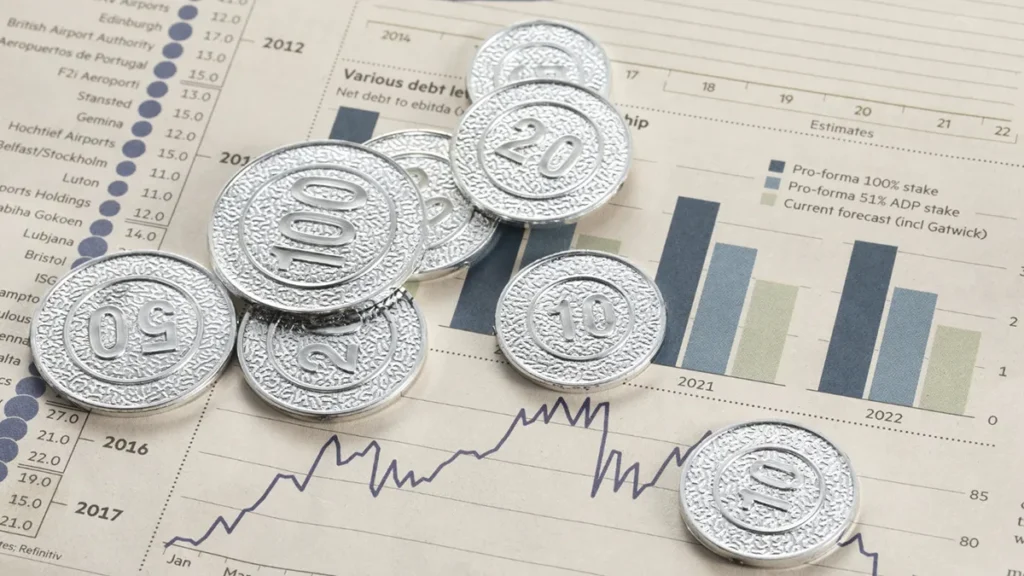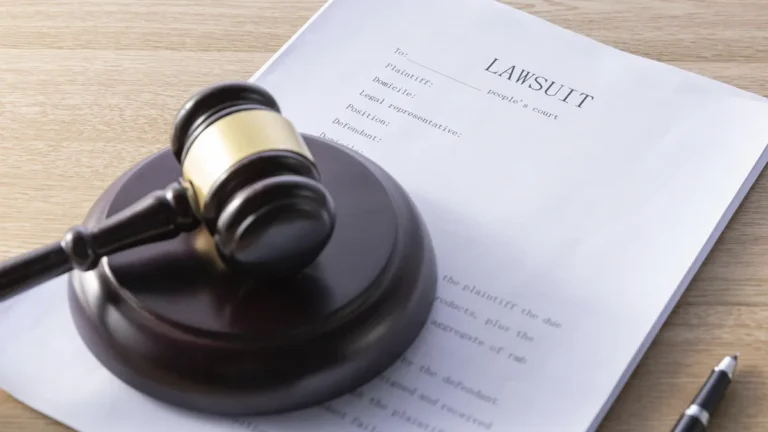Which Investment Has the Least Liquidity? A Guide to Illiquid Assets
Sometimes it feels like we are trapped in our wealth! Want to know which investment has the least liquidity? As a business owner or an investor, you might have gone through such a situation where you needed immediate cash. But sadly, you could not get it because your investments were too hard to sell. This highlights the importance of liquidity. Liquidity means how much your assets can be converted into quick cash immediately without significantly losing their real value. The Bankrate Survey 2025 found that 52% of Americans could not pay for a $1,500 emergency bill without borrowing money or selling something. It clearly shows the importance of liquidity in financial planning.
This guide covers investments with low liquidity and why they are harder to liquidate. Not only that, we will also share some valuable tips on how you can manage these assets and ensure your portfolio remains balanced even with assets that are tough to sell.
What is Liquidity?
Cash is king, especially when you need it most. In investing, liquidity determines how quickly you can turn assets into cash without incurring a major loss. But liquidity isn’t just about speed; it’s about market depth, trading costs, and hidden risks that can trap even savvy investors.
Which assets are considered the least liquid?
To avoid the risks, a liquid spectrum shows how liquid or illiquid an asset can be. For instance, stocks, bonds, and checking accounts are considered highly liquid as you can sell them almost instantly at market value.
So, what is the least liquid asset? The answer is private equity. It sits at the bottom of the investment liquidity ranking. Besides, it is considered the least liquid investment along with venture capital. Such investments may take more time and effort to sell even at a lower price. Then, there are some moderately liquid investments, including mutual fund houses, real estate investment trusts, etc.
Some other illiquid investment options include:
- Cryptocurrency Locked in Staking/DeFi
- Private Debt (Peer-to-Peer Loans, Direct Lending)
- Litigation Finance
- Royalties (Music, Patents, Books)
- Classic Cars & Vintage Automobiles
- Rare Watches (Patek Philippe, Rolex Daytona)
- Art & NFTs (Non-Fungible Tokens)
- Collectible Sneakers & Trading Cards
5 Factors that Influence an Asset Liquidity

The following 5 key elements determine whether an asset flows like cash or takes ages to get sold.
- Market Depth
Some markets always have a crowd. Blue-chip stocks, major currencies, and Treasury bonds trade in such enormous volumes that you can buy or sell large amounts without noticeably moving the price. There’s always someone ready to take the other side of your trade. But venture into small-cap stocks or obscure derivatives. You will find yourself in a quieter neighborhood where your mere presence (or trade) can change the landscape. The fewer the participants, the bigger the gap grows between what buyers will pay and what sellers demand.
- The Hidden Costs of Trading
Every transaction chips away at your returns in ways you might not immediately see. Brokerage fees and commissions are the obvious culprits, but the real thieves often work in the shadows. That difference between the buying and selling price might seem small, but it adds up quickly.
Try selling a house and you will face even steeper costs. The real estate agents typically take 5-6% right off the top. They do not count closing costs and potential price concessions to attract buyers. Some hard-to-sell investments punish you for leaving early with redemption fees or penalties. Additionally, it makes asset liquidity an expensive proposition.
- The Waiting Game
Time is money, and some assets make you wait longer than others to cash out. Stocks and ETFs can convert to cash in days while selling a small business or a piece of real estate might take months or years. Even within the same asset class, liquidity varies dramatically. You must try selling a rare baseball card versus a current-year mint condition card, or a downtown office building versus a suburban house. The more specialized or unique the asset, the longer you will likely spend finding that perfect buyer willing to pay your price.
- Regulatory Constraints
Sometimes the market isn’t the problem, it’s the fine print. Many investments come with built-in delays. Newly public companies often lock up insider shares for months. Private equity deals might trap your money for a decade. Even some mutual fund houses hit you with fees if you withdraw too quickly. Moreover, these restrictions exist for legitimate reasons, but they mean your “liquid” assets might be anything but nothing when you need them most.
- When Markets Change Their Mind
Liquidity is not constant it ebbs and flows with market sentiment. In good times, everything seems easy to sell. But when panic hits, even traditionally liquid markets can dry up overnight. Remember 2008 when supposedly safe mortgage bonds became impossible to unload? Or March 2020, when even Treasury markets briefly seized up?
Therefore, it is important to understand which Investment has the least liquidity. The reason is that it directly affects your ability to access funds when you need them the most.
Least Liquid Investment Options
Some assets can tie up your money for years, making them risky if you need quick access to cash. This section discusses which Investment has the least liquidity. Besides, it explains other low-liquidity investments, the challenges they present, and possible solutions.
1. Private Equity & Venture Capital
Investing in startups or private companies through venture capital funds often means locking up your capital for years. These investments don’t trade on public markets, so there’s no easy way to sell your stake if you need cash. Even if the company succeeds, you might wait a decade before seeing returns, assuming an acquisition or IPO happens.
So, here are some challenges that you may have to face:
- No early exits: Funds often enforce 5-10-year lock-up periods.
- No secondary market: Unlike stocks, you can’t just sell your shares to another investor.
To avoid being locked in the least liquid investment, fund through secondary market access and make an early exit strategy. Limiting VC/PE to 10-20% of your portfolio, if investing directly, negotiate exit terms upfront. It will help you ensure you’re not stuck when cash is needed.
2. Real Estate

Like small business ownership, real estate is notoriously illiquid. Even high-demanded properties take months to sell, with high transaction costs.
For example, you need to sell a rental property fast to cover medical bills, but buyer demand is weak. After six months, you accept an offer 15% below your asking price and still pay $20,000 in fees. Finding a buyer can take months, and closing costs (agent fees, taxes, repairs) can eat into your profits. If the market slows, you might have to slash prices to sell.
Some common challenges people usually face include:
- Slow sales process: Even hot properties can take 30-90 days to close.
- High transaction costs: Commissions alone can cost 5-6% of the sale price.
- Market risk: A downturn could force you to sell at a loss.
Tax-efficient planning is key to a successful business. The small business tax strategies can help you with long-term investment.
How to avoid being trapped in liquidity properties?
- To avoid being trapped in illiquid properties, maintain an emergency cash reserve equal to 6-12 months of expenses. Consider opening a Home Equity Line of Credit before you need it, as this lets you access funds without selling.
- When you do need to sell, explore faster alternatives like seller financing or lease-option agreements. You can significantly reduce transaction costs by using discount brokers.
- Savvy investors always balance their real estate holdings with more liquid assets like ETFs or bonds and focus on purchasing properties in high-demand areas that sell more easily.
- A good rule is to keep real estate at 20-40% of your total net worth for proper diversification.
3. Collectibles (Art, Rare Coins, Vintage Cars)
Unlike assets traded in a mutual fund house, collectibles lack a liquid market. Their value hinges on finding niche buyers, making them one of the least liquid investments. There’s no daily pricing, the value depends on finding the right buyer, which could take years.
For example, you inherit a rare 19th-century coin collection. An appraiser values it at 100,000, but after a year of searching, the best offer got 65,000, with a 15% auction fee. Auctions and dealers also take hefty cuts (10-30%).
Some common challenges that come with collectibles are as follows.
- Subjective pricing: An item’s worth depends on trends and buyer interest.
- Limited buyers: Only a small group of collectors may want your asset.
To avoid liquidity traps, sell through specialized auction houses (10–15% fees) or niche platforms like Heritage Auctions. Limit collectibles to <10% of your portfolio, and always get multiple appraisals, values fluctuate wildly based on collector demand.
4. Hedge Funds
Hedge funds rank among the least liquid investments, locking up capital for years despite their high-return potential, and even after that, you may only get quarterly redemption windows.
For example, you invest $500,000 in a hedge fund. A year later, a can’t-miss opportunity arises, but your fund won’t let you withdraw for another 12 months, forcing you to pass. It limits how much you can cash out at once.
Expect these challenges while dealing with hedge funds:
- Lock-up periods: You can’t touch your money for years.
- Redemption delays: Even when allowed, withdrawals take weeks or months.
Before investing, negotiate shorter lock-ups or partial redemption options. Pair hedge funds with liquid assets (ETFs, cash) to cover emergencies, and always review redemption terms, some funds offer quarterly windows with 30-90 day notice periods.
Key Takeaways on How You Can Manage Investments with Low Liquidity

While illiquid assets offer unique opportunities, they demand strategic planning to avoid cash traps. Here’s how to invest wisely:
- Diversify Your Portfolio
Balance illiquid holdings such as real estate, and private equity with liquid assets like ETFs, and bonds.
- Follow the 20% rule
You can limit illiquid investments to ≤20% of your total portfolio by following the 20% rule.
- Maintain a Liquid Safety Net
Keep 6-12 months’ worth of expenses in cash/cash equivalents. You can consider a HELOC for real estate or a pledged asset line for emergencies
- Plan Your Exit Before Investing
Here’s how to smartly plan your exit before investment:
For real estate: Explore lease options or seller financing
For collectibles: Identify specialized auction houses upfront
For private equity: Understand secondary market options
When considering illiquid assets, make sure to watch them with your investment horizon.
- Align Investments With Your Timeline
It is important to invest only those funds that you won’t need for 5+ years. Besides, verify redemption terms like notice periods, withdrawal limits, etc.
- Stress Test Your Strategy
Ask yourself questions such as: “Could I survive 2+ years if all illiquid assets froze?”
- Take Professional Advice
If you are still unsure, you can get professional help from financial advisors.
The most successful investors know well which investment has the least liquidity. They combine illiquid opportunities with strong liquidity buffers. This discipline lets them profit from high-reward assets without the cash crunch.
Moreover, the world of illiquid investments is changing. Some innovations, like tokenized real estate and fractionalized art, make these hard to sell investments more liquid. Technology can also improve access to markets, which was not possible for an average investor previously. All of this increases liquidity in the long run.
Conclusion
Though illiquid investments can offer significant returns, they also come with risks. For instance, if you’re wondering which investment has the least liquidity? these types such as real estate, private equity, or collectibles often top the list. The main drawback is that you may be unable to access your funds immediately when you need them the most.
So it is very important to understand which Investment has the least liquidity. For this assessment, assess the profile of your assets, whether you are dealing with private equity, real estate, collectibles, mutual fund houses, or hedge funds. It helps you manage your financial health.
By diversifying and having a solid exit strategy, you can ensure that your portfolio is balanced and prepared for both long-term growth and short-term liquidity needs.
Have you invested in any of these illiquid assets? What challenges did you face? Share your experience in the comments below.






